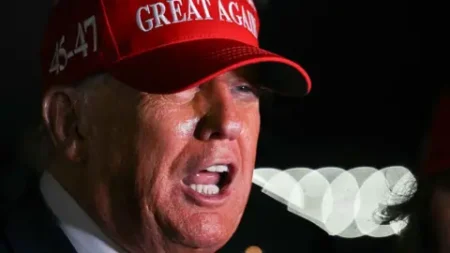The topic of the United States’ national debt has recently resurfaced, particularly with the staggering figure of $37 trillion now associated with it. A significant factor prompting this discussion was the passage of Donald Trump’s so-called “Big Beautiful Budget Bill,” which promises to contribute an additional $3 trillion to the existing debt. This scenario raises pressing questions about the sustainability and security of America’s borrowing practices in the eyes of international lenders.
Criticism of Trump’s budget plan has been vocal, including dissent from his former ally, Elon Musk, who labeled it a “disgusting abomination.” This discontent hints at a growing anxiety regarding the viability of continuing to borrow against an ever-mounting debt pile. Observers are increasingly questioning the limits of foreign nations’ willingness to continue financing the United States, particularly given the noticeable depreciation of the U.S. dollar and the increasing interest rates being demanded by investors wishing to lend money to the U.S. government. This borrowing is essential for the country to cover its expenses, notably the gap between its revenues and its annual expenditures.
The repercussions of this debt spiral have been reflected in the falling value of the dollar; since the beginning of this year, it has depreciated by 10% against the British pound and 15% against the euro. While borrowing costs have remained relatively stable, the yield curve has shown an increase, indicating rising apprehensions regarding the long-term viability of U.S. borrowing habits. Despite the U.S. maintaining lower interest rates than both the European Union and the United Kingdom—a traditional indicator of a stronger dollar—investors seem unconvinced, suggesting deeper concerns about U.S. fiscal health.
Ray Dalio, founder of the world’s largest hedge fund, has posited that the U.S. is hitting a pivotal moment regarding its borrowing practices. He warns that the U.S. could soon find itself facing annual repayments of around $10 trillion in loans and interest, predicting significant economic trauma if the issue is not addressed swiftly. According to Dalio, the current trajectory of U.S. debt could lead to unmanageable levels if not properly handled, raising alarms over potential defaults.
The potential solutions to this escalating crisis could take several forms. A drastic reduction in government spending or a significant tax hike could help remedy the situation, as Dalio suggests that trimming the budget deficit from its current 6% to 3% could mitigate future issues. Yet, Trump’s budget, while making some spending cuts, leans more heavily towards additional tax reductions, which seems contrary to necessary fiscal recovery efforts.
Another approach would be for the Federal Reserve to follow historical patterns seen during past economic crises, potentially resorting to printing money to buy government debt. However, this move might further exacerbate economic disparities, benefitting asset holders while neglecting those reliant on wage income. Finally, the most dire option would involve a default on debts, a scenario where the “full faith and credit of the U.S. Treasury” might be called into question, reflecting negatively on the entire global financial system.
While the likelihood of such a dire consequence—like a default—seems low at present, it is essential to note that the global reliance on the U.S. dollar creates a precarious situation. As Mohamed El-Erian expertly puts it, while some entities are striving to reduce their exposure to the dollar, viable alternatives are limited, making it “the cleanest dirty shirt” in the market.
In summation, the $37 trillion debt should compel serious consideration, albeit with some comforting realities in our current predicament. Comparing the debt against the U.S.’s annual income, approximated at $25 trillion, provides a more meaningful perspective. While the debt-to-income ratio may be concerning, it is still lower than that of other nations such as Japan or Italy, bolstered by the U.S. economy’s innovative capacity. Nonetheless, the issues surrounding U.S. sovereignty in fiscal matters remain critical, as discussions surrounding debt sustainability and the future of the dollar continue to unfold at the highest levels.









